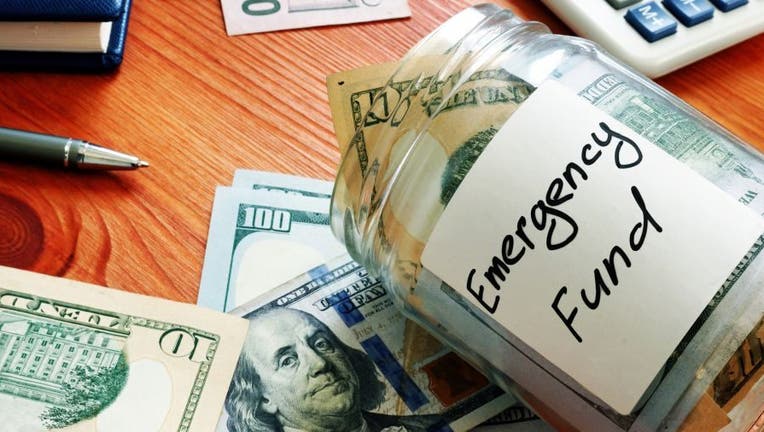7 ways to pay off unplanned expenses

Are your finances prepared to take a hit from an emergency? (iStock)
Life is full of uncertainties, and while it may seem impossible to plan for unexpected expenses, your financial boat could sink if you’re not prepared. Some of the most common costs people don’t prepare for include dental emergencies, a car breaking down, emergency room visits, the demise of a washer or water heater, and pet emergencies.
A PEW study reported that 41% of American households didn’t have at least $2,000 set aside to cover the cost of an emergency. More recently, SimplyWise released the results of a survey that showed 24% of Americans are planning to access their 401(k) to cover expenses, and 1 in 5 Americans could not last more than two weeks off of their savings.
If you’re among the millions of Americans who could not pay for an unplanned expense, here are a few tips that could help:
Start an emergency fund/HSA
Review your monthly budget and make cuts
Sell items
Apply for a personal loan
Get a home equity line of credit
Apply for a 0 percent APR credit card
Borrow from your retirement account
7 ways to pay for unplanned expenses
1. Start an emergency fund/HSA: The first thing on this list is a preventative measure. In a perfect world, every household would have at least six months’ worth of expenses set aside in an emergency fund. That can take time to build up. To begin, start by trying to set aside at least $1,000 cash that you could use in a pinch. Having even an extra $1,000 set aside could help you cover an emergency cost without going into debt.
Check with your health insurance company to see if you qualify for an HSA (health savings account). If you have a high-deductible plan, you may be able to set up to $3,550 for an individual or $7,100 aside in an HSA per year. Funds in your health savings account roll over every year so you won’t lose any unspent funds. The best part: contributions to an HSA are tax-deductible, and any withdrawals used for medical expenses aren’t taxed either.
4 THINGS YOU CAN DO TO SAVE MONEY WITHIN JUST MINUTES
2. Review your monthly budget and make cuts: Having a budget, whether you need to pay for unexpected expenses or not, is an essential part of your financial health. One way to find extra cash for an emergency fund or to cover an emergency bill is to review your monthly expenses. Consider cutting out non-essentials like:
Cable TV
Streaming services (movie and music)
Eating out
“Quick” runs to the grocery store
Expensive cell phone plans
Car washes
Gym memberships
Additionally, look for ways to reduce your grocery bill by purchasing reusable napkins instead of paper towels, using coupons, and sticking to a list. You can also save a lot of money by paying attention to the food you already have on hand and using it up.
3. Sell items: If you need cash quick to pay a bill, see if you have anything to sell. High-ticket items like televisions, old cell phones, computers, and a second car could help put a dent in an emergency expense.
4. Apply for a personal loan: A personal loan could help cover an emergency expense. You can get a personal loan from a local credit union or you can explore your personal loan options by visiting Credible to compare rates and lenders.
When you apply for a personal loan, the lender will review your credit score and financial history. Make sure to ask your lender about loan fees and how it will affect the amount you receive.
HOW TO GET A $100,000 PERSONAL LOAN
5. Get a home equity line of credit: If you’re a homeowner, you may be able to take advantage of lower interest rates by applying for a home equity line of credit (HELOC). A home equity line of credit acts a bit like a credit card. When approved, your lender provides access to a set amount of money for a set draw period (usually at least five years). You can borrow as much or as little as you need during your draw period. You can even borrow all available funds, pay it back, and borrow the funds again until the draw period ends. During the repayment period, you only pay interest on any money that you owe.
Like most personal loans, you can use a HELOC for anything from home renovations to vacation or covering an emergency expense. Check Credible to see what's available.
6. Apply for a 0 percent APR credit card: If you have a good credit score, you may qualify for a 0 percent APR credit card. While accruing credit card debt to cover an emergency is unwise, if you can get a card with a low or no interest rate, you could pay the money back without ever owing interest.
Credible can help you find the right credit card for you. Choose zero percent credit cards and get a breakdown of the annual fee, welcome offers, credit needed and more.
EVERYTHING YOU NEED TO KNOW ABOUT ZERO PERCENT INTEREST CREDIT CARDS
7. Borrow from your retirement account: If all else fails and you need money to cover an emergency expense, you may be able to borrow money from your retirement account. If you take money out of your retirement account early, you may have to pay early withdrawal fees and taxes on the amount you take out.
Dealing with unexpected expenses isn’t fun, but knowing you have options and planning in advance can let you focus on the more critical parts of handling your emergency without worrying about money.

